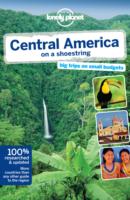Full Description
This new 2-volume set aims to share and preserve ethnic and traditional knowledge of herbal medicine and treatments, while also emphasizing the link between biodiversity, human nutrition, and food security. Ethnic Knowledge and Perspectives of Medicinal Plants is divided into two volumes, with volume 1 focusing on the traditional use of curative properties and treatment strategies of medicinal plants, and volume 2 addressing the varied nutritional and dietary benefits of medicinal plants and the practice of Ayurveda. Both volumes stress the importance of bioresources for human nutrition and nutraceuticals based on ethnic knowledge and the need for efforts to protect biodiversity in many regions rich with medicinal plants.
Exploring the benefits of medicinal plants in disease prevention, treatment, and management, Volume 1 discusses the traditional use of medicinal plants as promising therapeutics for cancer, liver conditions, COVID-19, and other human ailments. It examines the efficacy of Ayurvedic and Chinese herbal medicine, Indian traditional medicine, and other ethnic herbal practices used by indigenous peoples of Azerbaijan, South America, Turkey, India, etc. A variety of plants are discussed, and the ethnomedicinal applications of over 100 wild mushrooms for their medicinal and healthcare purposes are elaborated on.
While volume 1 focuses primarily on natural plant resources for addressing specific health issues, volume 2 looks at traditional medicinal plant use for their nutritional and dietary benefits, while also encouraging the preservation of biodiversity for healthy and sustainable diets. The volume presents information on over 2200 vascular plant taxa from 127 families as well as many taxa from leaf parts, fruits, underground parts, floral parts, seeds, and more that have potential use as edible food plants. Ethnic knowledge on the wild edible mushrooms is an emerging area, which is unique and is dependent on the folk knowledge of tribals; this volume discusses the unique nutritional attributes of wild edible mushrooms (206 species belonging to 73 genera) in Southern India. The authors look at various lichens as nutritional aids and medicine and as flavoring agents and spices. Fucoidans derived from the seaweeds (and spirulina) are described for their antioxidant activity, nutritional and anti-aging properties, antiviral activities, anti-cancer properties, anti-diabetic properties, and more. The authors also examine how ethnicity affects healthcare/nutritive systems at different levels through various dynamics such as lower income, inability for services uptake, disputes among different ethnic groups, cultural attitudes (some ethnic group are vegetarian), lack of socio-economic resources, and disease prevalence.
Together, these two important volumes aim to preserve and disseminate the valuable ethnic knowledge of medicinal plants gained over thousands of years and to promote the value of integrating and safeguarding biodiversity.
Contents
VOLUME 1: CURATIVE PROPERTIES AND TREATMENT STRATEGIES PART I: ETHNOMEDICINE AND HEALTH SECURITY 1. Traditional Use of Biodiversity for Nutrition and Health in the Americas: A Case Study from Mexico 2. Traditional Medicinal Plants as Bioresource in Health Security PART II: ETHNOMEDICINAL FLORA 3. Traditional Herbal Treatments in Karabakh-Azerbaijan 4. Ethnic Knowledge on Medicinal Flora and Application by the Tribals of Southwest India: A Review 5. Ethnomedicinal Flora in Sacred Groves of Jhargram of West Bengal, India PART III: INDIGENOUS FLORA AND HUMAN HEALTH 6. Indigenous Medicinal Knowledge on the Common Medicinal Plants of Coastal Karnataka, India 7. The Genus Phyllanthus: A Rich Source of Pharmacologically Active Compounds Useful in Traditional and Modern Medicines 8. Unique Traditional Approach to Address the Human Health Issues by Ocimum sanctum 9. Ethnomedicinal and Current Applications of Neem (Azadirachta indica) PART IV: PERCEPTIONS OF ETHNOMEDICINE 10. Plant-Based Medicinal Attributes in India 11. COVID-19 Treatment Strategies and Phytoprophylaxis PART V: ETHNOMEDICINE AND LIFESTYLE DISEASES 12. Ayurveda and Lifestyle Diseases 13. The Multi-Targeting Efficacy and Therapeutic Effects of Ayurveda and Chinese Medicine: An Integrated Approach for Cancer Treatment and Management 14. Immunomodulatory Compounds Derived from Medicinal Plants as Promising Therapeutics for Cancer 15. Contribution of Indian Traditional Medicine in Cancer Treatment: An Update 16. A Comprehensive Review on Medicinal Properties of Dawa-ul-Kurkum and Its Ingredients Against Liver Ailments in Light of Ancient Wisdom and Modern Research 17. Herbal Medicines for the Treatment of Neurodegenerative Disorders 18. Ethnomedicinal Practices and the Role of Ayurveda in the Management of Oral Health and Hygiene PART VI: OTHER APPLICATIONS RELATED TO HEALTH 19. Ethnomedicinal Applications of 100 Wild Mushrooms of the Indian Subcontinent 20. Ethnomedicinal Significance of Epiphytic Orchids and Their Fungal Endophytes VOLUME 2: NUTRITIONAL AND DIETARY BENEFITS PART I: ETHNIC KNOWLEDGE 1. Traditional Use of Plant Diversity for Nutritional Purposes: A Case Study from Istanbul (Turkiye) 2. Ethnic Knowledge on Medicinal and Nutritional Attributes of Lichens with Emphasis on the Western Ghats 3. Nutritional Herbs from Karabakh, Azerbaijan 4. One-Hundred Plant Species Used by Tribals in the Western Ghats 5. Folkloric Knowledge of Plant Species Used by Local Communities in the Protected Area of Kashmir Himalayas 6. The Bagrote Valley Gilgit Baltistan: Plant Diversity and Ethnobotanical Aspects 7. Wild Food Plants from North Waziristan Tribal District, Khyber Pakhtunkhawa, Pakistan and Their Curative Uses 8. Nutrition and Health in Ethnic Groups of Azad Jammu and Kashmir, Pakistan 9. Wild Edible Plants and Their Remedial Uses Among the Different Tribes of Chitral Valley, Hindukush Range, Pakistan PART II: ETHNIC FOODS 10. Spirulina: Ethnic Food and Potential Health Applications 11. Functional Properties of Traditionally Edible Leafy Vegetable Talinum triangulare 12. Nutritional and Functional Attributes of Myristica malabarica Fruits 13. Functional Attributes of Ethnically Edible Fiddleheads in the Western Ghats 14. Nutritional and Medicinal Potential of Local and Seasonal Foods of India 15. Nutritional Attributes of Wild Edible Mushrooms in Southern India 16. Wild Edible Fungi of I?d?r Province (Turkey) 17. Indian Traditional Food from an Ayurveda Perspective PART III: NUTRACEUTICALS 18. Nutraceutical Potential of Fucoidans Derived from Seaweeds 19. Traditional Nutraceutical Perspectives of Floral Honey: A Review 20. Biochemical and Nutritional Attributes of Wild Floral Honey of the Western Ghats and West Coast of India 21. Ethnic Nutritional, Medicinal, and Packaging Values of Leaves PART IV: NUTRITIONAL SECURITY 22. Spirulina as a Dietary Supplement: Moving Towards Food Security 23. Quinoa: Golden Grain of 21st Century 24. Insight on the Total Lipids and Fatty Acids of Garcinia gummi-gutta Seeds 25. Bioactive Potential of Ethnically Edible Banana Inflorescence 26. Role of Plants to Manage Diseases 27. Sleep Physiology and Traditional Nutritional Practices








